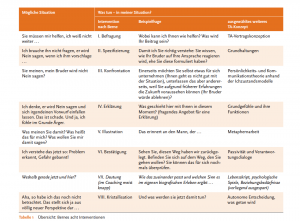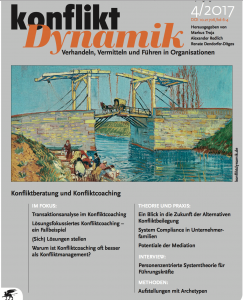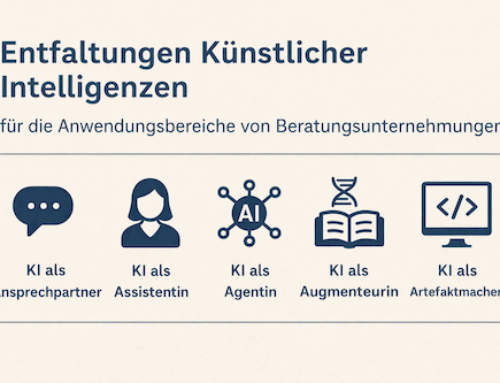Transactional analysis in conflict coaching
Part 2 of the trilogy on transactional analysis and mediation
in: Conflict Dynamics 04/2017, p. 248 – 260.
The second part of the trilogy on transactional analysis and mediation presents TA concepts based on conflict coaching. A dispute between brothers is used as an example to illustrate the possible course of a conflict coaching session based on transactional analysis. Eric Berne's eight interventions are presented as well as other concepts of transactional analysis. It becomes clear that transactional analysis provides a suitable set of tools for diagnosing and intervening in conflicts - whether in coaching or mediation.
Using an example case, concepts of transactional analysis are presented that can become relevant in coaching. The coaching process is embedded in the concept of the eight types of intervention according to Eric Berne, the founder of TA.






Excellent article on transaction-analytical counselling work.
Berne's eight forms of intervention are presented in detail and illustrated with examples. Other TA concepts are also summarised. Effective examples of questions (interventions) for practical counselling work are also provided.
The illustration of the ego state models suggests a certain interpretation of how the two models interact, which would greatly simplify the models. This illustration could be interpreted in such a way that the contents of the respective structural ego states (e.g. thinking and feeling in the EL ego state) would be expressed in behaviours of the „same“ functional ego states (behaviour EL ego state, critical or caring).
The author has chosen a model for the functional ego states that presents them in a partially one-sided way. I find it more effective for counselling work to expand the functional ego states to include a „positive = constructive, helpful“ and „negative = restrictive, obstructive“ part (Kahler). This differentiation is excellently illustrated in the new model „Functional Fluency“ (Temple).
With regard to the concept of passivity, it should also be mentioned that the author uses the term „passive thinking“ here. This is synonymous with the concept of „discount“ (ship / German translation „devaluation“).
The article as a whole offers both a theoretical and meta-perspective view of the TA – concepts, as well as a wealth of very concrete and practical examples for use in application. Highly recommended!
Thank you very much, Natalia! Helpful feedback! I particularly like the reference to the functional fluency model.